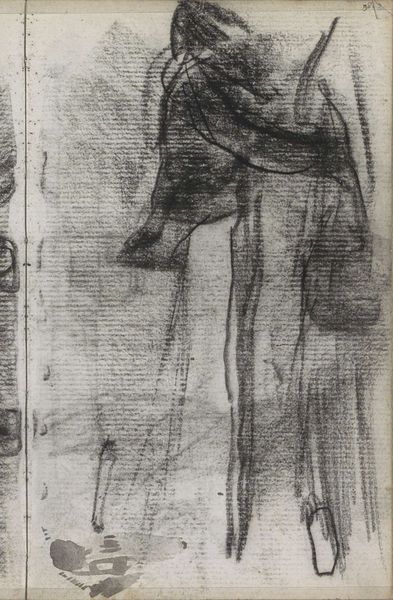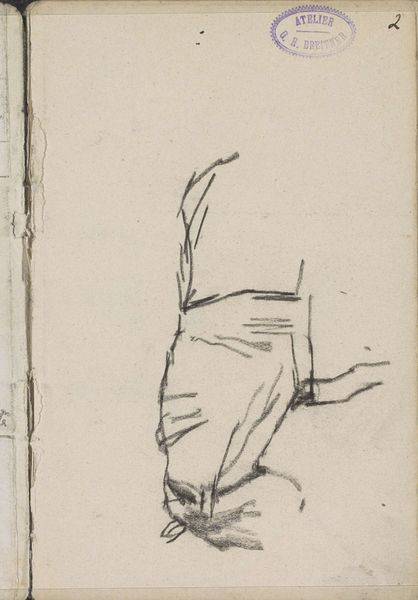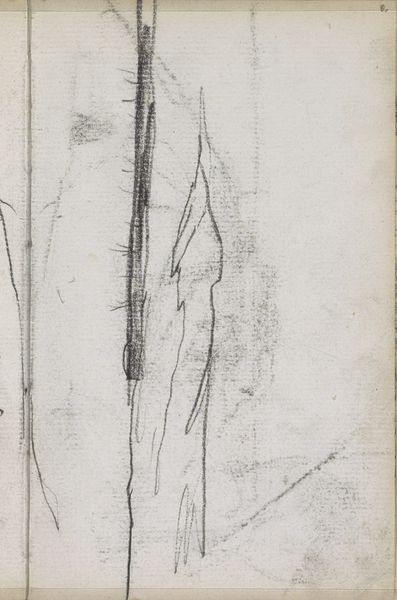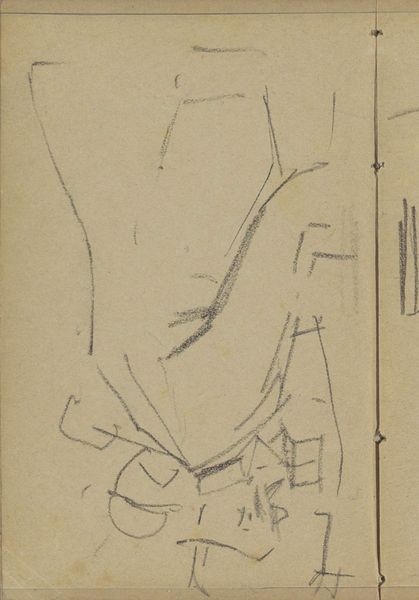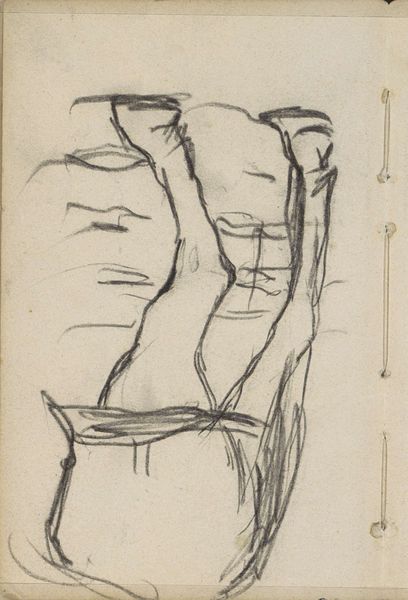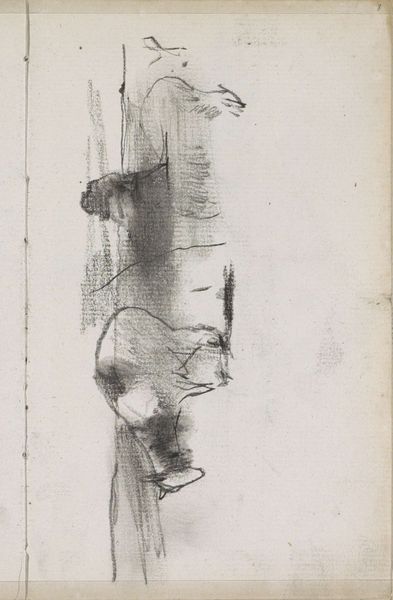
drawing, pencil, graphite
#
drawing
#
pencil sketch
#
figuration
#
form
#
pencil
#
graphite
#
sketchbook drawing
Copyright: Rijks Museum: Open Domain
Editor: Here we have George Hendrik Breitner’s "Hunebed," a pencil and graphite drawing from around 1884-1886, housed at the Rijksmuseum. It looks like a preliminary sketch, almost architectural in its blocky shapes. What do you see in this piece? Curator: Immediately, I'm drawn to the labor involved in its creation. Pencil and graphite, humble materials, employed to depict something ancient. Consider the social context: Breitner, part of the late 19th-century art scene, turning to prehistory. Editor: So you’re thinking about the materials in relation to the subject? Curator: Precisely. Graphite, mass-produced through industrial processes, is here used to represent megalithic structures— monuments built through intense physical labor long before industrialization. What kind of exchange does this suggest to you, the act of translating something so ancient through such new materials? Editor: It does feel like a conversation across time, with Breitner using readily available materials to capture something monumental from a bygone era. Was there something radical about sketching natural materials? Curator: In choosing to sketch a dolmen—a monument crafted from raw materials like stone, the antithesis of manufactured products—Breitner calls our attention to those physical materials. His drawing, executed with relatively inexpensive materials, makes this structure accessible to a wider audience. It moves it out of the exclusive domain of landscape painting and places it in a social space, a commentary on labor and society. Editor: I never thought of it that way! Seeing it as more than just a preliminary sketch opens up a new layer of interpretation. Curator: Exactly. It's not just the 'what' but the 'how' and 'why' that give this simple sketch depth. Editor: I’ll definitely consider that going forward.
Comments
No comments
Be the first to comment and join the conversation on the ultimate creative platform.


